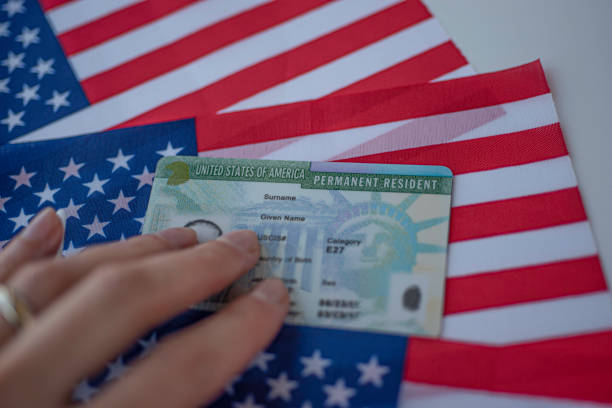Consular processing is a method for foreign individuals to apply for a U.S. visa or legal permanent residency (a green card) from outside the United States. It is a common pathway for individuals who are seeking to immigrate to the United States or obtain certain nonimmigrant visas. Here’s how consular processing typically works:
- Petition or Visa Application: The first step in consular processing usually involves someone in the U.S., such as a family member or employer, filing a petition or visa application on behalf of the foreign individual. This could be a family-sponsored immigrant petition, an employment-based visa petition, or other types of visas like student or tourist visas.
- Approval: Once the petition or visa application is approved by the appropriate U.S. government agency, such as U.S. Citizenship and Immigration Services (USCIS) for immigrant petitions or the U.S. Department of State for nonimmigrant visas, the case is forwarded to the U.S. Department of State’s National Visa Center (NVC).
- Visa Application: The NVC will notify the foreign individual or their attorney when it’s time to apply for a visa at the U.S. embassy or consulate in their home country. The applicant will need to complete the required forms and provide documentation, including supporting evidence of eligibility.
- Interview: The applicant will be scheduled for an interview at the U.S. embassy or consulate. During the interview, a consular officer will review the application, ask questions, and assess the applicant’s eligibility and admissibility to the United States. The consular officer may also request additional documentation.
- Visa Issuance: If the consular officer is satisfied with the applicant’s eligibility, they will issue the visa. The visa allows the applicant to travel to the United States and seek admission.
- Admission to the U.S.: Once the visa is issued, the individual can travel to the United States. Upon arrival, U.S. Customs and Border Protection (CBP) officers at the port of entry will determine whether to admit the individual as a temporary visitor or an immigrant, depending on the type of visa.
Page Contents
How to apply for consular processing?
To apply for consular processing, you will typically follow these general steps:
- Determine Eligibility: First, you must determine if you are eligible for the type of visa or immigrant status you are seeking. This may involve having a qualifying family member in the United States, a U.S. employer, or meeting the requirements for a specific visa category, such as a tourist visa or a student visa.
- Submit a Petition or Application: Depending on the type of visa or immigrant status you are applying for, someone in the United States, such as a family member or employer, may need to submit a petition or visa application on your behalf. This step is often required for family-sponsored immigrant visas, employment-based visas, and some other categories. The specific form and supporting documentation required will vary based on the type of visa or immigrant status.
- Receive Approval: After submitting the petition or application, you must wait for it to be processed and approved by the appropriate U.S. government agency. For immigrant visas, this is typically U.S. Citizenship and Immigration Services (USCIS). For nonimmigrant visas, it’s the U.S. Department of State.
- National Visa Center (NVC): Once your petition or application is approved, it is forwarded to the National Visa Center (NVC) if it’s an immigrant visa case. The NVC will contact you or your attorney, provide instructions, and request the necessary fees and documentation. This information includes the Affidavit of Support, a visa application form, and supporting documents, such as civil documents like birth certificates and marriage certificates.
- Pay Fees: You will be required to pay the visa processing fees and the affidavit of support fee, if applicable, to the NVC. These fees can vary based on the visa category.
- Complete the DS-260 Form: For immigrant visa cases, you will need to complete the DS-260 form online. This is the Immigrant Visa Electronic Application, and you’ll need the NVC case number and invoice ID number to access and complete it.
- Submit Required Documents: Assemble and submit all required documents, which may include your passport, birth and marriage certificates, police certificates, medical examination results, and other supporting evidence. Each visa category has specific document requirements.
- Attend Visa Interview: After submitting the required documents, you will be scheduled for a visa interview at the U.S. embassy or consulate in your home country. You should prepare for this interview by reviewing the specific requirements for your visa category, bringing all necessary documents, and being ready to answer questions about your eligibility.
- Receive Visa Decision: After the interview, the consular officer will make a decision on your visa application. If approved, they will issue a visa in your passport.
- Travel to the U.S.: Once you receive your visa, you can travel to the United States. Upon arrival, U.S. Customs and Border Protection officers at the port of entry will determine your admissibility and whether you will be admitted as a temporary visitor or as an immigrant.

Lois Lane is a professional blogger and a seasoned Content writer for wellhousekeeping.com. With a passion for simplifying complex Home Decor topics, he provides valuable insights to a diverse online audience. With four years of experience, Lois has polished his skills as a professional blogger.




